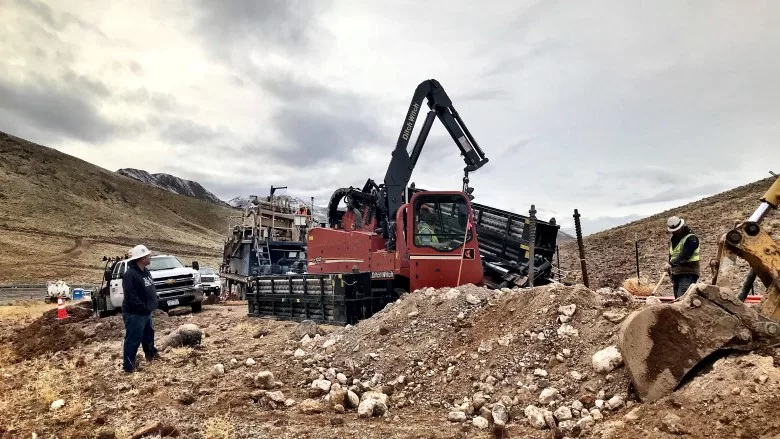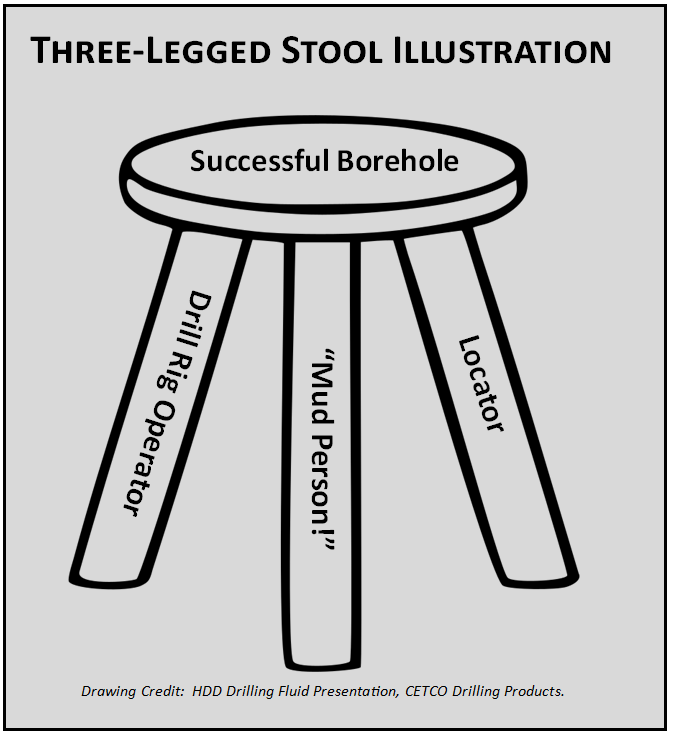The Most Important Person on an HDD Job
Is it the Operator? Mud tech? Locator?

The drill rig operator, locator and mud person each form a leg of the HDD project stool. That means responsibility for each success and challenge.
Source: CETCO Drilling Products
While on a recent Midwest sales trip, I met with a new horizontal directional drilling (HDD) company. The team, a well-oiled group that functioned great together, had come from the telephone communications side of our business and were now doing larger bores. They tackled both longer bores and larger product diameters.
As we stood around my SUV discussing the job at hand, I dropped a simple question into the October air: “Who is the most important person on this jobsite today?”
The question hung there. You could tell that the four workers did not want to get the answer wrong. One joked it was me. No. Two thought it was the drill operator. I awarded partial credit for that answer. The last said it was the “mud person.” I liked that answer, seeing how I was there to work with their mud tech to fine-tune their mix. But, no, that too was not the correct answer. It was a trick question.

No one person has more importance than another on any jobsite or construction job. That holds true for an HDD job, where a successful bore comes down to teamwork and communication. I use a “three-legged stool” illustration in my HDD class presentation. On all three legs, the stool is firm and can hold the weight. Remove one of the legs and the stool quickly topples over.
The drill rig operator, locator and mud person each form a leg of the HDD project stool. They all hold their portion of the weight (that is, the job’s success). The operator must know the rig, flows and pressures, and sense the ground conditions. We call this “driller finesse.” The locator feeds information for steerage to the operator and the operator, in turn, communicates the ground conditions based on the tools at the rig. The locator then records the condition and any special additions, corrections or bombs used at a certain rod count. At each pass from the pilot hole to the final pull, they know how to adjust as they come through that zone.
In the middle of this is the mud tech: mixing drilling fluid, testing raw mud and returns alike, and making changes on the fly. He or she constantly communicates with the operator and locator to make sure the blood of the borehole keeps the arteries open.
Communication between all three “stool legs” is key. The borehole has a higher potential to succeed with well-communicated conditions, warnings and needed changes.
The most important people, on that job and on every job, are the entire team. Everyone has a role to play and takes credit for a win (and, some days, a loss). As with most answers, communication between all three “stool legs” is key. The borehole has a higher potential to succeed with well-communicated conditions, warnings and needed changes.
The crew I saw that morning impressed me. They had four walkie-talkies onsite. The operator, locator, mud tech and laborer each had a handset. They all knew everything going on. Listening to the chatter, the whole crew could adjust proactively, making changes promptly before conditions deteriorated. The stool stood firmly in place.
Looking for a reprint of this article?
From high-res PDFs to custom plaques, order your copy today!


